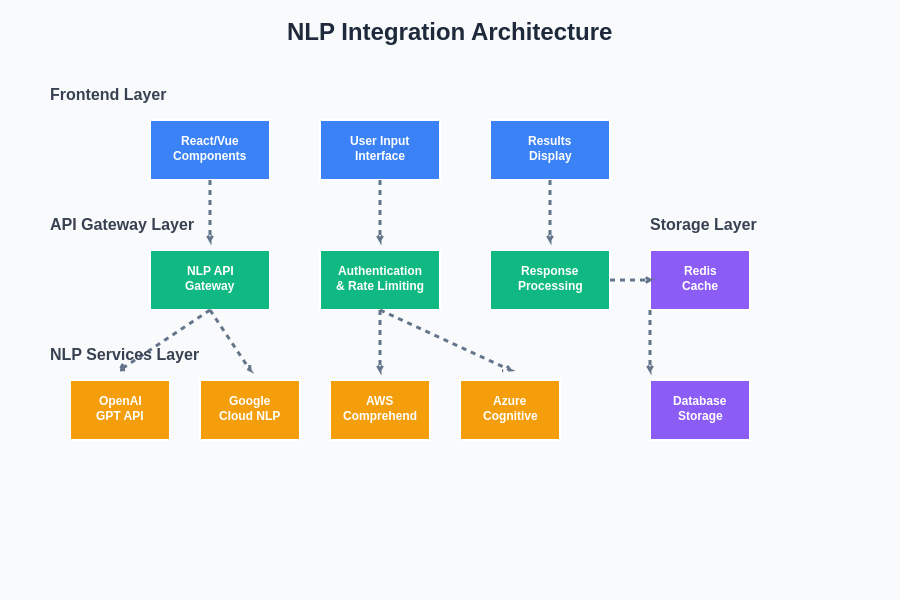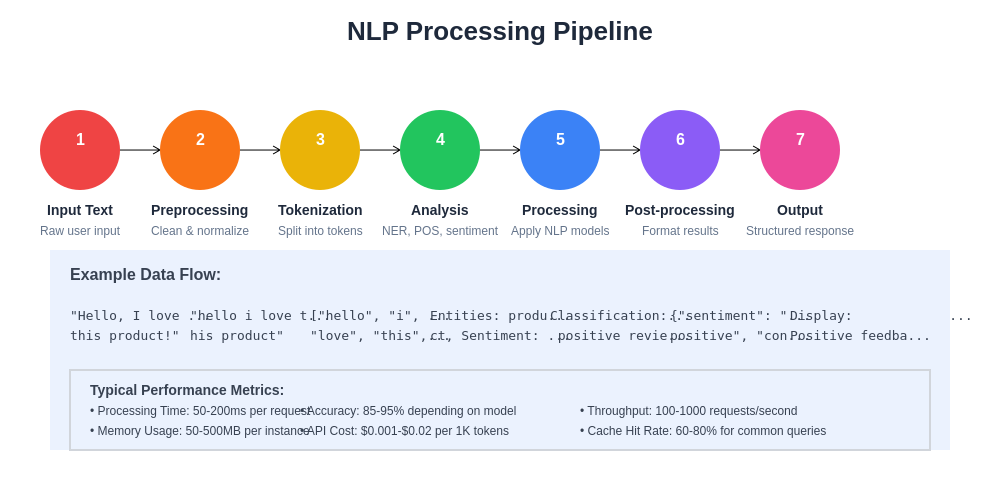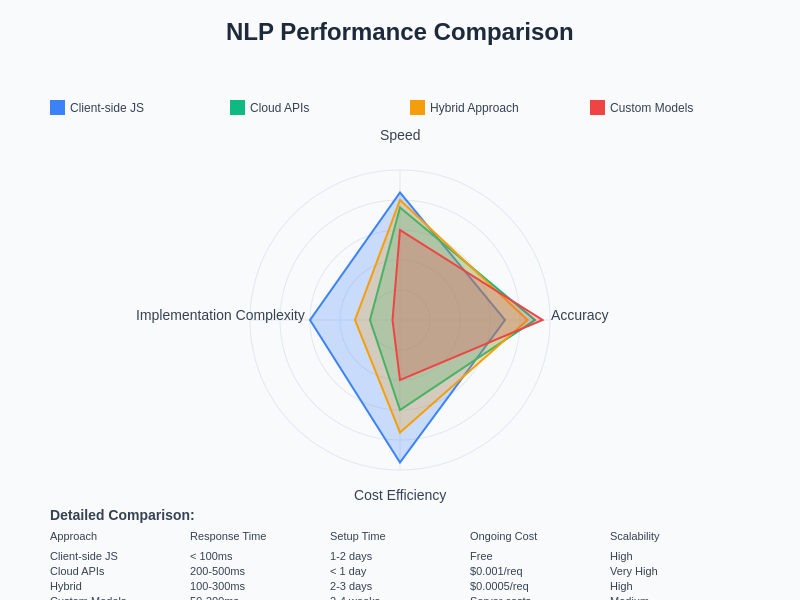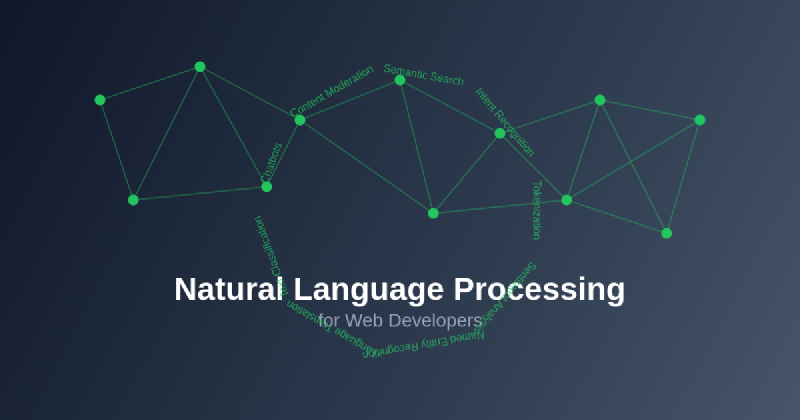Natural Language Processing has emerged as one of the most transformative technologies in modern web development, enabling developers to create applications that can understand, interpret, and respond to human language in meaningful ways. The integration of NLP capabilities into web applications has opened unprecedented opportunities for creating more intuitive user interfaces, intelligent content management systems, and sophisticated data analysis tools that can process and understand textual information at scale.
Explore the latest AI development trends to discover cutting-edge techniques and tools that are reshaping how we build intelligent web applications. The convergence of web technologies and natural language processing represents a fundamental shift in how users interact with digital systems, moving beyond traditional form-based interfaces toward more conversational and contextually aware experiences.
Understanding Natural Language Processing in Web Context
Natural Language Processing encompasses a broad range of computational techniques designed to enable computers to understand, interpret, and generate human language in a valuable way. For web developers, NLP represents an opportunity to enhance user experiences by incorporating intelligent text analysis, sentiment detection, language translation, content summarization, and automated response generation directly into web applications. The field has evolved from academic research into practical tools and APIs that can be readily integrated into modern web development workflows.
The practical applications of NLP in web development extend far beyond simple text processing. Modern web applications can leverage NLP to provide real-time language translation, automated content moderation, intelligent search functionality, personalized content recommendations, and sophisticated chatbot interactions. These capabilities enable developers to create more engaging and accessible web experiences that can adapt to user needs and preferences while processing large volumes of textual data efficiently.
Essential NLP Concepts for Web Developers
Understanding the fundamental concepts underlying Natural Language Processing is crucial for web developers seeking to implement these technologies effectively. Tokenization forms the foundation of most NLP operations, involving the process of breaking down text into individual words, phrases, or meaningful units that can be analyzed programmatically. This process enables web applications to process and analyze text at a granular level, facilitating more sophisticated analysis and understanding of user-generated content.
Named Entity Recognition represents another critical NLP concept that enables web applications to identify and classify specific entities within text, such as names, locations, organizations, dates, and other relevant information. This capability proves invaluable for applications that need to extract structured information from unstructured text, enabling features such as automatic tagging, content categorization, and intelligent data extraction from user inputs or document processing workflows.
Sentiment analysis provides web applications with the ability to determine the emotional tone and attitude expressed in textual content, enabling developers to create applications that can respond appropriately to user feedback, monitor brand sentiment, or provide personalized experiences based on detected emotional states. This technology has become increasingly sophisticated, capable of detecting nuanced emotions and contextual sentiment that goes beyond simple positive or negative classifications.
Modern NLP APIs and Services for Web Development
The landscape of NLP services available to web developers has expanded dramatically, offering powerful cloud-based APIs that provide sophisticated language processing capabilities without requiring extensive machine learning expertise. Services such as Google Cloud Natural Language API, Amazon Comprehend, Microsoft Cognitive Services, and IBM Watson provide comprehensive NLP functionality through RESTful APIs that can be easily integrated into web applications using standard HTTP requests and responses.
Enhance your development workflow with Claude to leverage advanced AI capabilities for building more intelligent web applications with sophisticated natural language understanding. These cloud-based services offer advantages including scalability, reliability, and continuous improvement through machine learning models that are constantly updated and refined by teams of experts.
OpenAI’s GPT models have revolutionized the accessibility of advanced NLP capabilities for web developers, providing APIs that can perform text completion, summarization, translation, and conversation generation with remarkable accuracy and fluency. The integration of these models into web applications has enabled developers to create sophisticated chatbots, content generation tools, and intelligent assistants that can understand context and provide meaningful responses to user queries.

The architectural approach to integrating NLP services into web applications requires careful consideration of data flow, API management, caching strategies, and error handling. Modern web applications typically implement NLP functionality through microservices architectures that can scale independently and provide reliable processing of natural language tasks.
JavaScript Libraries and Frameworks for NLP
Client-side NLP processing has become increasingly viable with the development of JavaScript libraries that can perform various natural language processing tasks directly in the browser. Libraries such as Natural, compromise, and wink-nlp provide comprehensive NLP functionality that can be executed without server-side processing, enabling real-time text analysis and reducing latency for certain types of language processing tasks.
The compromise library offers a particularly developer-friendly approach to NLP in JavaScript, providing intuitive APIs for parsing, analyzing, and manipulating natural language text. This library enables web developers to perform tasks such as part-of-speech tagging, named entity recognition, and text normalization directly in the browser, creating responsive user experiences that don’t require constant server communication for basic NLP operations.
TensorFlow.js has opened new possibilities for running sophisticated machine learning models, including NLP models, directly in web browsers. This capability enables developers to create web applications that can perform complex language processing tasks while maintaining user privacy by processing sensitive textual data locally rather than sending it to external services for analysis.
Building Intelligent Search and Content Discovery
Implementing intelligent search functionality represents one of the most practical applications of NLP in web development. Traditional keyword-based search systems often fail to understand user intent and context, leading to poor search results and frustrated users. NLP-enhanced search systems can understand synonyms, handle misspellings, interpret natural language queries, and provide more relevant results based on semantic understanding rather than simple keyword matching.
Elasticsearch has emerged as a powerful platform for implementing NLP-enhanced search functionality, offering built-in support for various natural language processing features including stemming, synonym detection, and relevance scoring based on semantic similarity. The integration of Elasticsearch with web applications enables developers to create sophisticated search experiences that can understand user intent and provide highly relevant results from large document collections.
Vector search capabilities have revolutionized how web applications can implement semantic search functionality, enabling systems to find content based on meaning rather than exact keyword matches. This approach involves converting text into high-dimensional vectors that represent semantic meaning, allowing search systems to find conceptually similar content even when different words are used to express similar ideas.
Implementing Real-time Language Translation
Multi-language support has become essential for web applications targeting global audiences, and NLP-powered translation services provide powerful tools for implementing real-time language translation functionality. Modern translation APIs can detect source languages automatically and provide high-quality translations that maintain context and nuance, enabling web applications to serve users in their preferred languages without requiring manual content translation.
The implementation of real-time translation in web applications involves considerations such as caching translated content, handling translation errors gracefully, and maintaining user interface responsiveness during translation operations. Progressive enhancement approaches allow applications to provide basic functionality even when translation services are unavailable while enhancing the experience with translated content when possible.
Browser-based translation capabilities have evolved to enable client-side translation processing, reducing server load and improving privacy by keeping sensitive content local to the user’s device. Web APIs such as the proposed Translation API provide standardized interfaces for accessing browser-native translation capabilities, though fallback strategies remain important for ensuring broad compatibility across different browsers and devices.
Creating Intelligent Chatbots and Conversational Interfaces
Conversational interfaces have become increasingly popular in web applications, providing users with natural language interfaces for accessing information and completing tasks. The development of sophisticated chatbots requires understanding of dialogue management, context preservation, intent recognition, and response generation, all of which can be enhanced through modern NLP technologies and frameworks.
Discover advanced AI research capabilities with Perplexity to stay informed about the latest developments in conversational AI and natural language understanding that can enhance your web applications. The integration of large language models into chatbot development has dramatically improved the quality and naturalness of automated conversations.
Framework solutions such as Botframework, Dialogflow, and Rasa provide comprehensive platforms for developing sophisticated conversational interfaces that can be integrated into web applications. These frameworks handle complex aspects of dialogue management, natural language understanding, and response generation while providing developers with tools for customizing behavior and integrating with external systems and databases.
The implementation of conversational interfaces requires careful attention to user experience design, ensuring that interactions feel natural and productive rather than frustrating or confusing. This involves designing appropriate fallback mechanisms, providing clear guidance about system capabilities, and implementing smooth handoff procedures when human intervention becomes necessary.
Content Analysis and Moderation Systems
Automated content moderation has become essential for web applications that handle user-generated content, and NLP technologies provide powerful tools for identifying inappropriate content, spam, and potentially harmful material. Modern content moderation systems can analyze text for toxicity, hate speech, personal information, and other problematic content types while maintaining high accuracy and minimizing false positives that could impact legitimate user content.
The implementation of content moderation systems requires balancing automation with human oversight, ensuring that edge cases and contextual nuances are handled appropriately. Machine learning models for content moderation continue to improve, but human review remains important for maintaining quality and handling complex cases that require cultural and contextual understanding.
Real-time content analysis enables web applications to provide immediate feedback to users about their content, helping prevent problematic submissions before they are published. This proactive approach improves user experience by providing clear guidance about content policies while reducing the burden on moderation teams and maintaining community standards effectively.

The content analysis pipeline typically involves multiple stages of processing, including preprocessing, feature extraction, classification, and post-processing to ensure accurate and reliable content moderation decisions across diverse types of textual content.
Performance Optimization and Caching Strategies
NLP operations can be computationally intensive and potentially slow, making performance optimization crucial for maintaining responsive web applications. Effective caching strategies can dramatically improve the performance of NLP-powered features by storing processed results and avoiding redundant API calls or computational operations for frequently encountered text patterns.
Client-side caching of NLP results enables web applications to provide immediate responses for previously processed content while reducing server load and API usage costs. IndexedDB and other browser storage mechanisms provide robust solutions for storing processed NLP data locally, enabling offline functionality and improved performance for repeat interactions.
Server-side caching strategies involving Redis, Memcached, or database-level caching can significantly improve the performance of NLP-powered web applications by storing processed results and sharing them across multiple users and sessions. Intelligent cache invalidation strategies ensure that cached results remain accurate while maximizing the performance benefits of caching frequently requested NLP operations.
Security and Privacy Considerations
The processing of textual data through NLP systems raises important security and privacy considerations that web developers must address carefully. User-generated content may contain sensitive personal information that requires protection, and the transmission of textual data to external NLP services creates potential privacy risks that must be mitigated through appropriate security measures.
Data anonymization techniques can help protect user privacy while still enabling effective NLP processing, involving the removal or masking of personally identifiable information before text is processed by external services or stored for analysis. Regular security audits and compliance with data protection regulations ensure that NLP-powered web applications meet appropriate privacy and security standards.
Local processing of sensitive textual data using client-side NLP libraries can provide enhanced privacy protection by avoiding the transmission of sensitive information to external services. This approach requires careful consideration of performance implications and functionality trade-offs but can provide important privacy benefits for applications handling sensitive user data.
Integration with Modern Web Frameworks
The integration of NLP capabilities with popular web frameworks such as React, Vue.js, and Angular requires thoughtful architectural decisions to ensure smooth user experiences and maintainable code. Modern JavaScript frameworks provide excellent foundations for building NLP-powered user interfaces that can handle real-time text processing and display results effectively.
React hooks and context providers offer elegant solutions for managing NLP processing state and sharing processed results across components, enabling the development of sophisticated user interfaces that incorporate natural language processing seamlessly. Custom hooks can encapsulate NLP API interactions and provide reusable functionality across different components and applications.
Server-side rendering considerations become important when implementing NLP functionality in modern web applications, particularly when SEO requirements necessitate server-side processing of content for search engine indexing. Next.js, Nuxt.js, and similar frameworks provide excellent platforms for implementing NLP functionality that works effectively with both client-side and server-side rendering approaches.
Testing and Quality Assurance for NLP Features
Testing NLP-powered web applications requires specialized approaches that account for the probabilistic nature of natural language processing and the potential variability in results. Unit testing of NLP functionality involves creating comprehensive test suites that validate expected behavior across diverse input scenarios while accounting for the inherent uncertainty in language processing results.
Integration testing of NLP APIs and services ensures that web applications handle various response scenarios gracefully, including successful processing, error conditions, rate limiting, and service unavailability. Mock services and test doubles provide valuable tools for testing NLP integration without relying on external services during development and continuous integration processes.
User acceptance testing for NLP features requires careful consideration of diverse language patterns, edge cases, and cultural variations that may affect processing accuracy. Comprehensive testing across different user demographics and usage patterns helps ensure that NLP-powered features provide consistent and reliable experiences for all users.

Monitoring and measuring the performance of NLP features requires tracking metrics such as processing speed, accuracy rates, user satisfaction, and system resource utilization to ensure optimal performance and identify areas for improvement.
Future Trends and Emerging Technologies
The field of Natural Language Processing continues to evolve rapidly, with emerging technologies such as transformer models, few-shot learning, and multimodal processing opening new possibilities for web applications. Large language models are becoming increasingly accessible through API services, enabling web developers to incorporate sophisticated language understanding and generation capabilities without requiring extensive machine learning expertise.
Edge computing and WebAssembly are enabling more sophisticated client-side NLP processing, allowing web applications to perform complex language processing tasks locally while maintaining privacy and reducing latency. These technologies promise to make NLP functionality even more accessible and performant in web environments.
The integration of voice interfaces with web applications represents an emerging frontier where NLP technologies combine with speech recognition and synthesis to create more natural and accessible user interfaces. Web APIs for speech processing are becoming more widely supported, enabling developers to create voice-powered web applications that leverage advanced NLP capabilities for understanding and responding to spoken language.
Practical Implementation Guidelines
Successful implementation of NLP features in web applications requires careful planning, appropriate technology selection, and iterative development approaches that prioritize user experience and performance. Starting with simple NLP features and gradually expanding functionality allows development teams to gain experience and confidence while providing immediate value to users.
Cost management represents an important consideration when implementing NLP functionality, as API usage fees and computational costs can accumulate quickly with popular applications. Implementing appropriate usage monitoring, caching strategies, and optimization techniques helps control costs while maintaining high-quality user experiences.
Documentation and team education are crucial for successful NLP implementation, ensuring that development teams understand the capabilities and limitations of chosen NLP technologies and can make informed decisions about feature development and optimization strategies.
The future of web development increasingly involves natural language processing capabilities that enable more intuitive and intelligent user interfaces. As NLP technologies continue to mature and become more accessible, web developers who understand these capabilities will be well-positioned to create innovative applications that provide superior user experiences through intelligent language processing and understanding.
Disclaimer
This article is for informational purposes only and does not constitute professional advice. The views expressed are based on current understanding of NLP technologies and their applications in web development. Readers should conduct their own research and consider their specific requirements when implementing NLP features in web applications. The effectiveness and accuracy of NLP implementations may vary depending on specific use cases, data quality, and chosen technologies.
